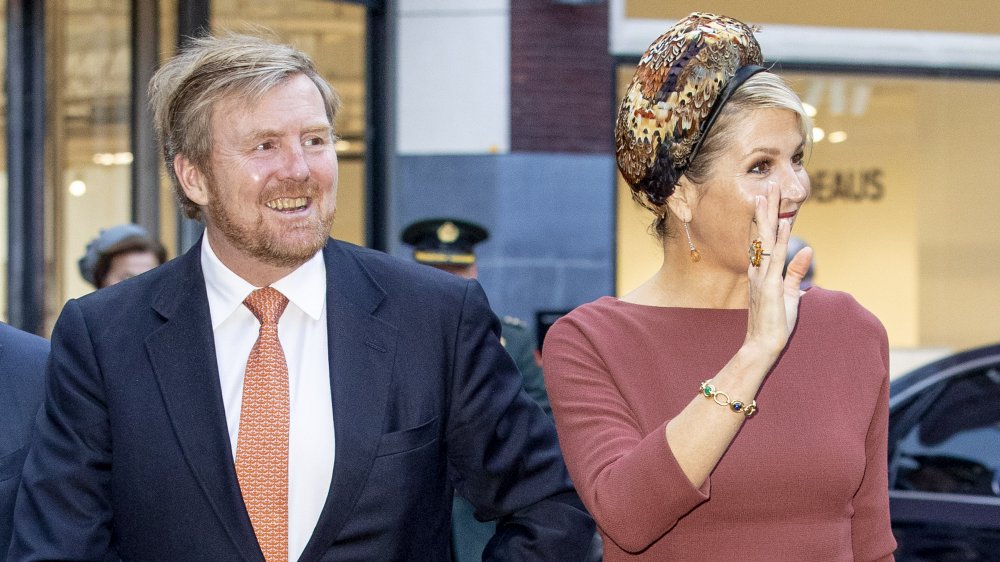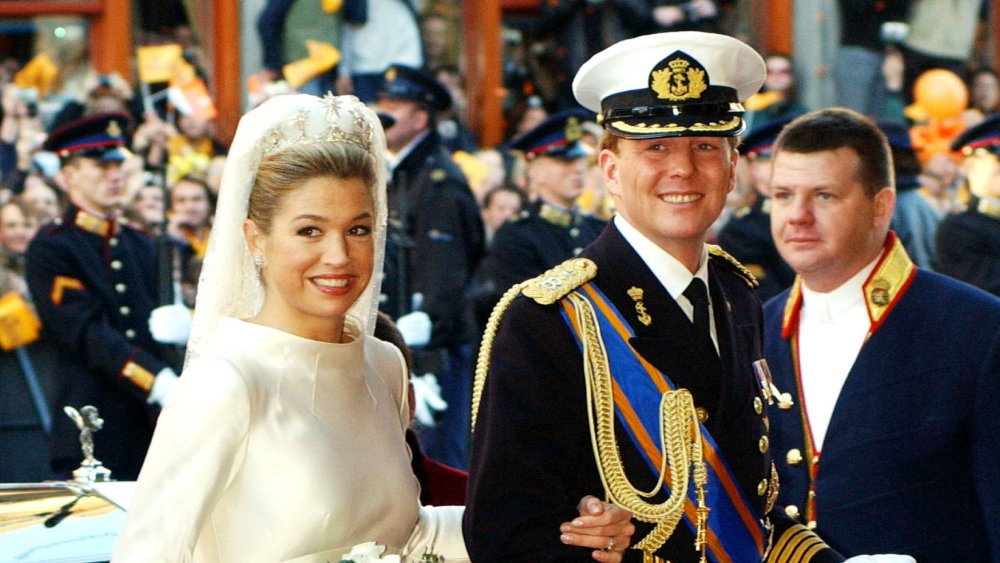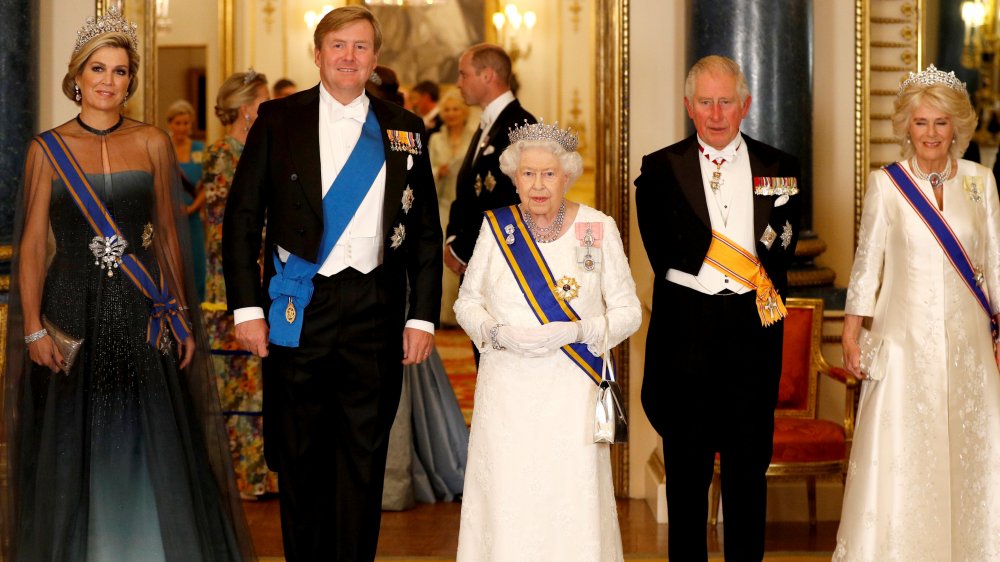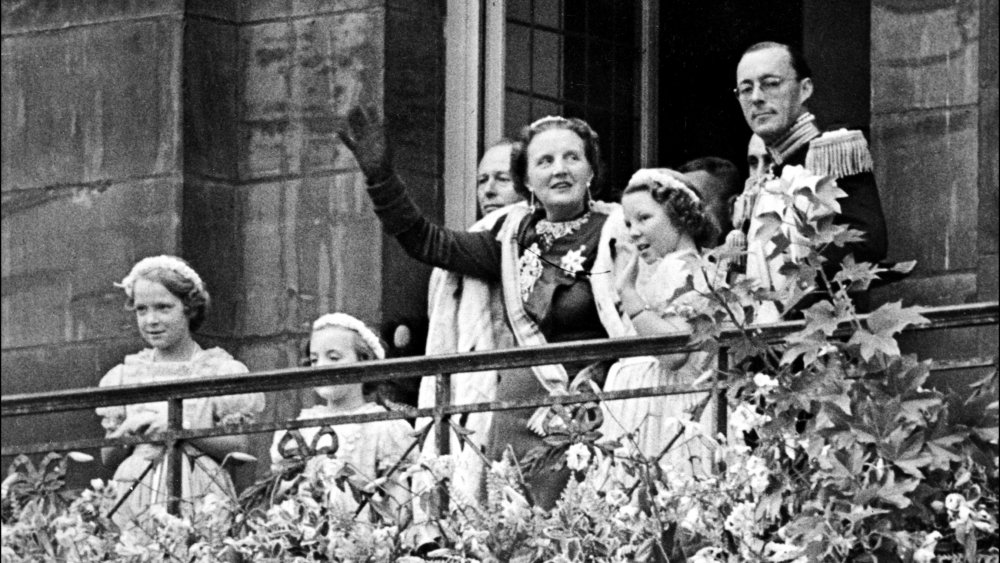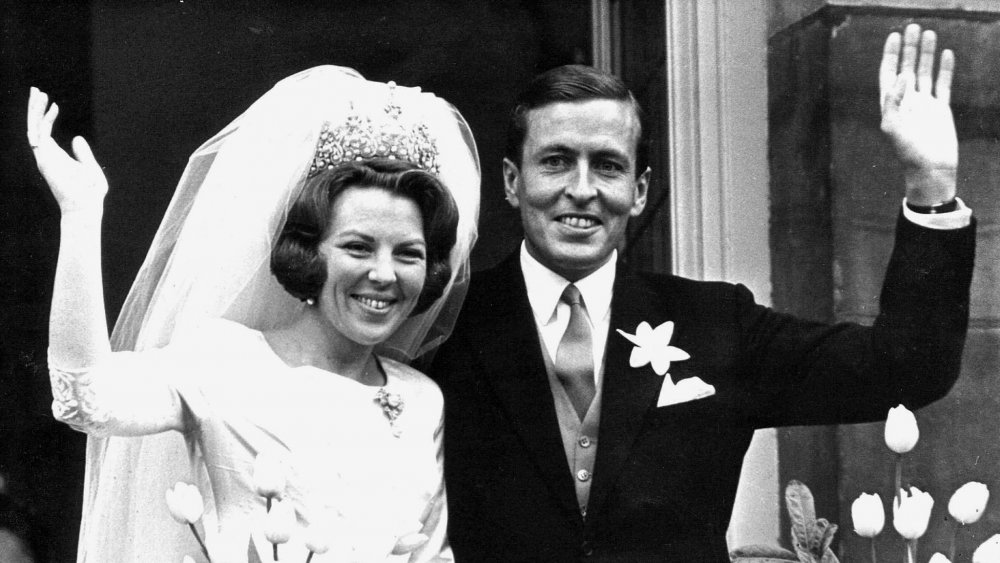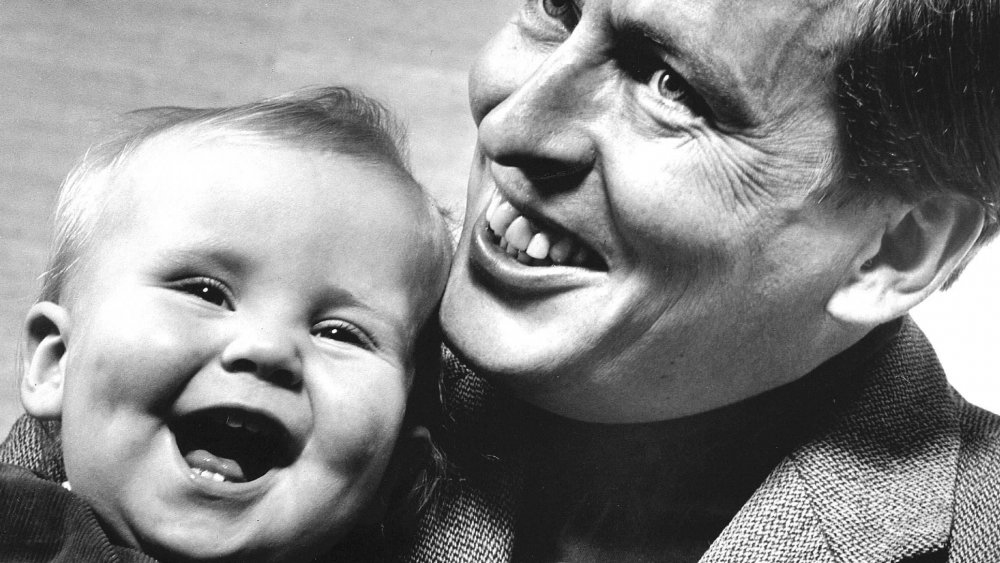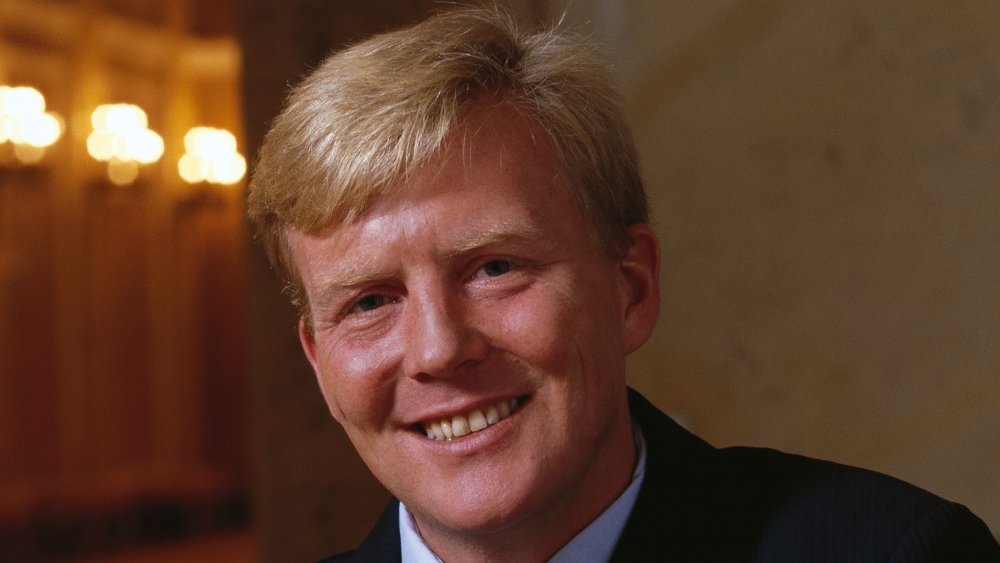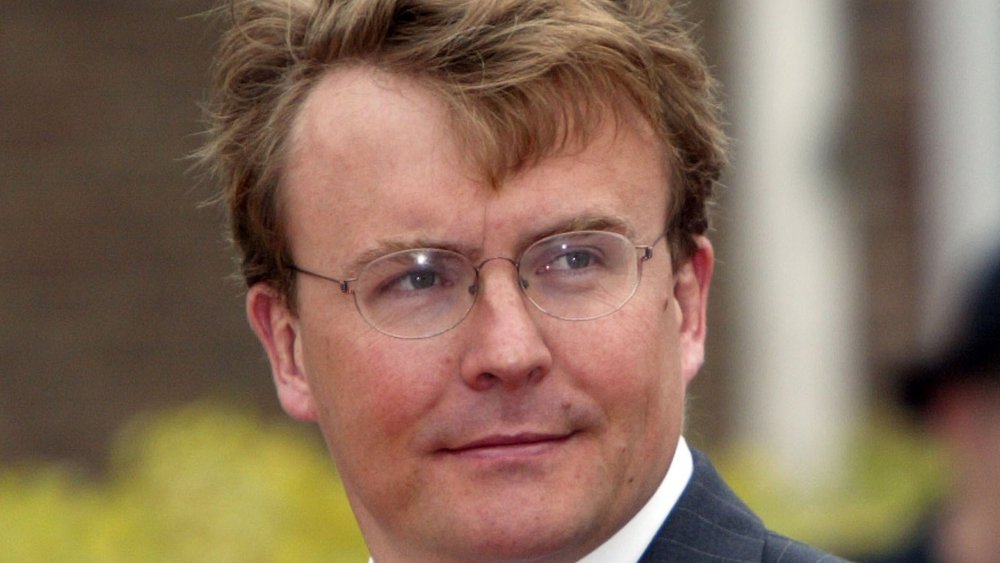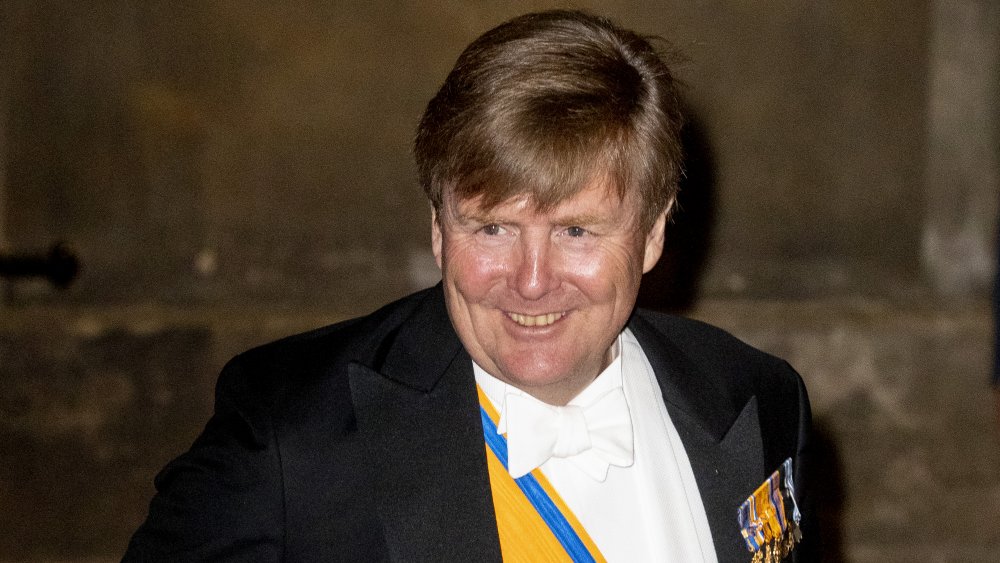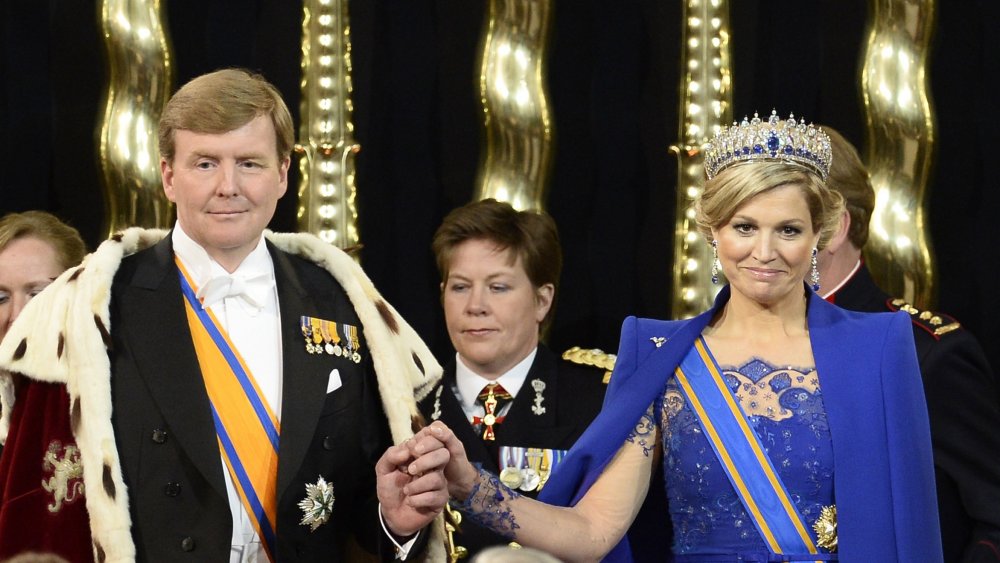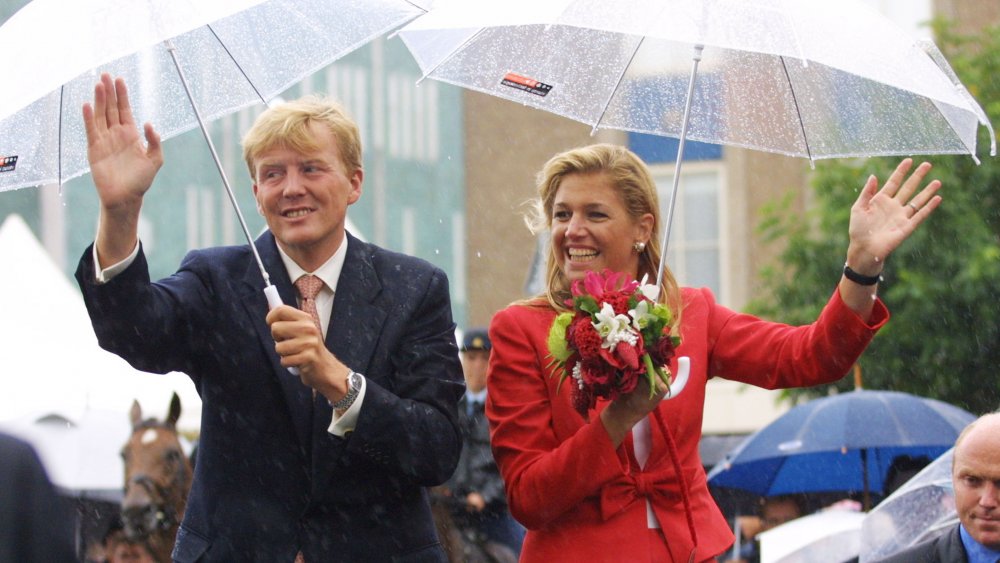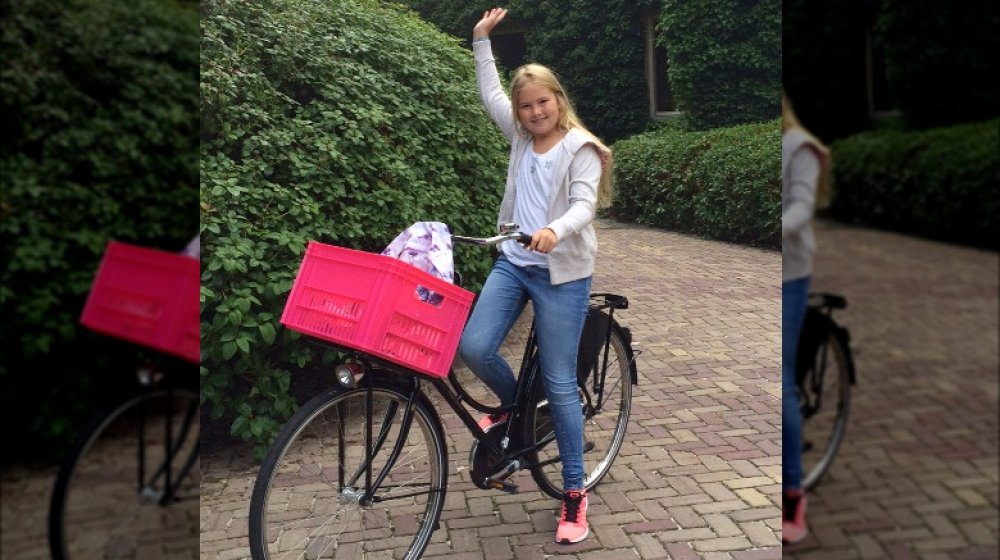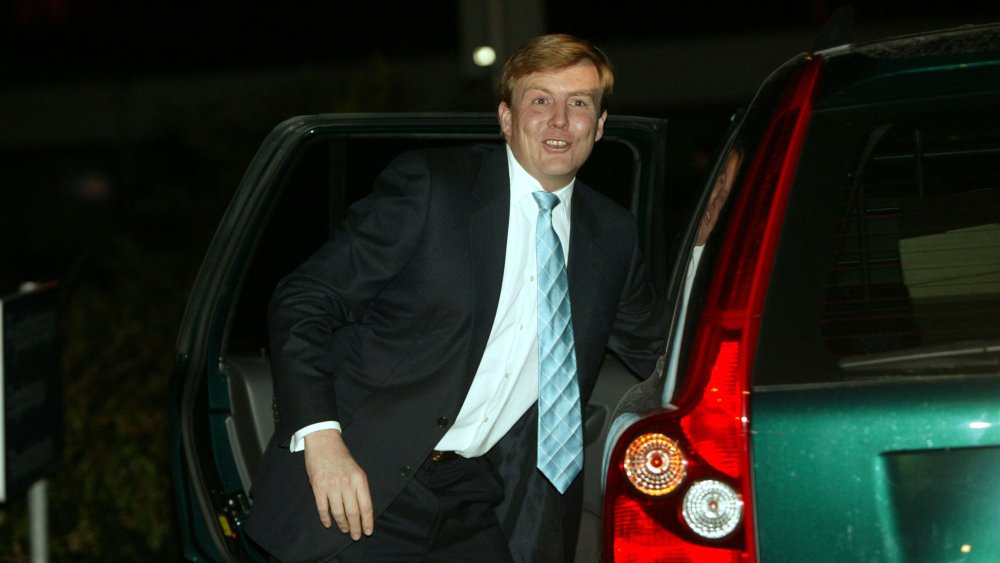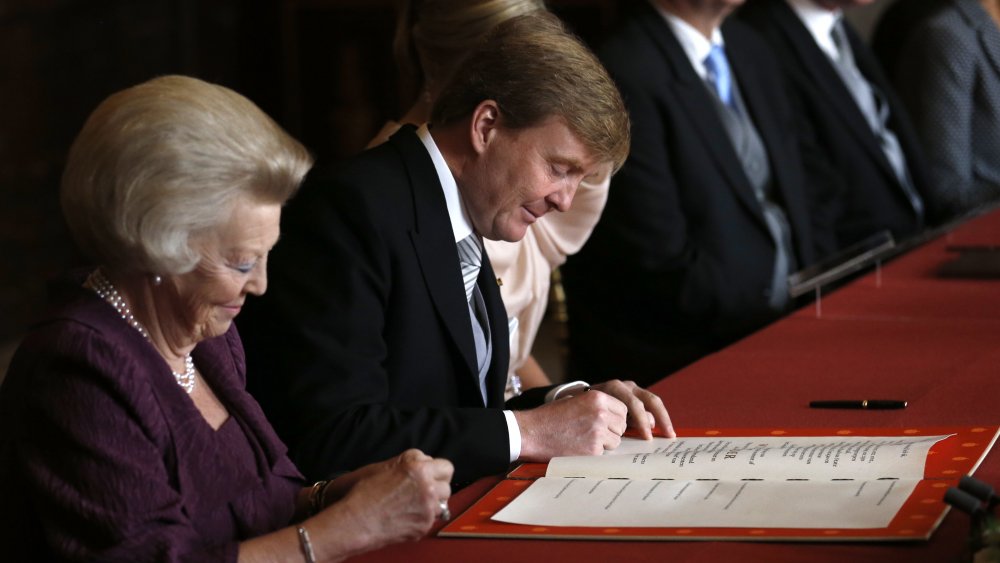The Untold Truth Of The Dutch Royal Family
When you think of the royal family, the Dutch royal family probably isn't the one you have in mind. You likely think of Queen Elizabeth, Prince Charles, and the rest of the British royals, but England's elite is far from the only royal family in the world — although it is arguably the most famous one. The world is filled with monarchs, apparently.
While the Dutch royal family may not get as much international press as their British counterparts, that doesn't mean that they are any less interesting. Like other royal families, the Dutch royal family is filled with history, intrigue, and just a little bit of scandal. Headed by King Willem-Alexander and his wife Queen Maxima, the Dutch royal family is both glamorous and fascinating. Whether you're a longtime fan of the Dutch royals or are just getting to learn about this royal clan, here's the truth about the Dutch royal family.
The Dutch royal family is one of the most expensive in Europe
Royal families generally tend to spend quite a bit of money, but it's not just on luxury cars and fancy palaces — although that's certainly a part of it. In addition to any expenses incurred as part of their royal duties paid for by taxpayers, royals also get a personal allowance.
A 2012 study by Herman Matthijs, a professor at Ghent University, found that the Dutch Royal family had overtaken the British royals as Europe's most expensive royal family and spends millions annually on personal allowances (via The Telegraph). In 2020, CNN World reported that the Dutch royal family ranked fourth in the most expensive royal families, but that doesn't mean they're "affordable."
In 2018, Dutch News revealed that a report from Dutch republican society Republikeins Genootschap claimed the family spends €350 million (about $382 million) annually, far more than the officially reported amount of €60 million (around $65 million). The organization also claimed that the Dutch royal family barely pays any taxes on their €12 billion (roughly $13 billion) fortune. However, a spokesperson for the family denied the report and said the king pays taxes.
Several members of the Dutch royal family married commoners
While some royal families may turn up their noses at the idea of marrying someone who isn't of royal or noble birth, the Dutch royal family has been rather laid back when it comes to marrying so-called "commoners." King Willem-Alexander's aunt, Princess Christina, married day care administer Jorge Guillermo in 1975.
Willem-Alexander's brother, Prince Friso, had his title stripped as second-in-line to the throne after marrying Mabel Wisse Smit (now Princess Mabel) in 2004. As noted by CBS News, the Dutch government refused to approve the marriage as she gave false information concerning an alleged relationship with a drug dealer. Willem-Alexander's other brother, Prince Constantijn, also married a commoner. His wife, the former Petra Laurentien Brinkhorst, is now known as Princess Laurentien. NRK noted that Laurentien worked for CNN and the Belmont European Policy Centre prior to her marriage.
Willem-Alexander himself even married a commoner. His wife, the now Queen Maxima, was born in Argentina to a wealthy landowner. In an interview with Vanity Fair, King Willem-Alexander said that he was glad he married a "normal" albeit an "extraordinary" wife, as Maxima helps him stay "down to earth."
The Dutch royal family is distantly in line for the British throne
Due to centuries of intermarriage, nearly all of the royal families of Europe are related — albeit distantly — to each other. According to Insider, the royal families of Britain, Luxembourg, Sweden, Norway, Denmark, Spain, Monaco, and the Netherlands are all related thanks to the fact that they are all descended from King George II, who ruled Great Britain and Ireland from 1727 until 1760.
This means that King Willem-Alexander and his descendants are technically heirs to the British throne, although they're really, really far down on the list. According to Hello! magazine, just before the king inherited the Dutch throne in 2013, he was estimated to be 889th in line for the British throne. With each birth within the British royal family, like the birth of Prince Harry and Meghan Markle's son Archie, Willem-Alexander is bumped down the list and thus gets farther from the throne. As such, it's highly unlikely that the king will ever be called upon to take over as head of the British monarchy.
The Dutch royal family lived in exile during the second world war
As the Nazis invaded the Netherlands during World War II, the Dutch royal family fled the country, as noted by CBC. They went to London but, fearing that the U.K. would also be invaded, Queen Wilhelmina decided to send her heir, Crown Princess Juliana, to Canada. Accompanied by her children, the future Queen Beatrix and Princess Irene, Princess Juliana arrived in Canada in June 1940 and lived in Ottawa with her children for four years.
Canada was happy to host the Dutch royals. Princess Juliana was pregnant when she arrived in Canada, prompting the Canadian government to designate the hospital maternity suite where Princess Juliana gave birth as "extraterritorial." This was in order for the royal's baby, Princess Margriet, to have full Dutch citizenship. If the suite had not been designated as such, Princess Margriet would not have been eligible to be in line for the throne as she would not have had sole Dutch citizenship.
Queen Beatrix of the Dutch royal family and Prince Claus' wedding was controversial
In 1966, Queen Beatrix, who was Crown Princess Beatrix at the time, married Claus von Amsberg, who thus became Prince Claus. Their wedding caused a scandal as Claus, who came from an aristocratic German family, had been a member of the Hitler Youth in his younger years, as noted by his obituary in The Guardian. While the future prince served with the German army during World War II, he never saw combat and was later deemed not to have Nazi ties after being cleared by a denazification court. By the time he met the Dutch royal, he had a law degree and was employed by the West German diplomatic corps.
Although his name had been legally cleared, many were upset by the princess' choice in a partner. During the couple's wedding procession, Beatrix and Claus were confronted by protesters carrying smoke bombs, but the young royal was determined to go through with the wedding, Vogue reported.
Despite the initial controversy the couple's union caused, Claus eventually won over the populace by proving his dedication to the Netherlands and its people.
King Willem-Alexander was the first male heir born to the Dutch royal family in over a century
For Monaco's royal family, King Willem-Alexander's birth was especially notable. As noted by Hello! magazine, he was the first male heir to the Dutch throne born in over a hundred years. And, prior to his taking the throne, the last Dutch male to rule was King Willem III, who passed away in 1890, according to Dutch News.
Willem III left the throne to his daughter, Wilhelmina, who was too young to rule at the time. Her mother, Emma, acted as regent until Queen Wilhelmina came of age in 1898. Queen Wilhelmina then passed on the crown to her daughter, Queen Juliana, who was succeeded by her daughter, Queen Beatrix.
So, by the time Willem-Alexander took the throne in 2013, it'd been a total 123 years since the Netherlands had a king. Willem-Alexander is also likely to be the last male ruler for quite some time again as he has three daughters — heir apparent Catharina-Amalia, Alexia, and Ariane — and no sons.
King Willem-Alexander of the Dutch royal family once had a wild reputation
The fact that King Willem-Alexander is such a popular king is made all the more impressive because not everyone thought that he was king material in his younger years. In his youth, the then-prince was quite rebellious and developed a bit of a reputation as being wild.
As noted by BBC, a picture of him holding a beer back in his student days earned him the decidedly un-royal nickname "Prince Pils." Dutch historian Henk te Velde told the outlet that the young royal "was seen as the jet-set prince" and known for "'chasing skirts.'" He not only had a reputation as a playboy, but also had an uneasy relationship with the press and, as te Velde noted, "was always a bit timid in public" and "a bit stiff."
Since then, Willem-Alexander has settled down and is viewed as a stable ruler and family man, with te Velde saying that the king is noticeably "more relaxed" and "himself" in public.
The tragic death of Prince Friso rocked the Dutch royal family
Tragedy struck the Dutch royal family in February 2012 when King Willem-Alexander's younger brother, Prince Friso, was caught in an avalanche while skiing. As noted by BBC News, the royal was buried under snow for some 15 minutes. The royal passed away in August 2013 after spending a year and a half in a coma.
The loss of Prince Friso broke the hearts of the Dutch royal family. Willem-Alexander spoke about the pain of losing his brother in a 2017 television interview (via Dutch News). He explained that while Prince Friso lived in London with his family and was not a part of his daily life, he was "always in the background," adding, "if you no longer have that, you miss it."
Willem-Alexander also said the tragedy was quite hard on his mother, Queen Beatrix, saying that when a mother suffers the death of a child "they lose part of themselves."
Several members of the Dutch royal family hold down ordinary jobs
The Dutch royal family is known for being quite down to earth. Unlike the senior royals of the British royal family, BBC noted that several senior members of the Dutch royal family work a regular job.
King Willem-Alexander's brother, Prince Constantijn, holds down a secular job. The same is true for Constantijn's wife Princess Laurentien. Both are employed by a global policy institute and they also both work for the Dutch ministry of foreign affairs part-time. Additionally, the late Prince Friso worked for a uranium-enrichment company.
Perhaps most surprising is that King Willem-Alexander himself holds down a regular job — one that he began while he was still a prince and kept well after becoming king. In a 2017 interview (via The New York Times), he announced that for the last 21 years he'd been an airline co-pilot for KLM Cityhopper, flying two flights per month. The king doesn't consider flying to be his main gig, though. Rather, he said he thinks of it as more of "a hobby."
This is why King Willem-Alexander of the Dutch royal family is never seen wearing a crown
While we hear about kings and queens being crowned in coronation ceremonies, such as Queen Elizabeth, who was coronated in 1953, there is no such ceremony in the Netherlands. While the Dutch royal family has a crown — and women are often spotted wearing tiaras — the monarch is not actually crowned when ascending the throne. Instead, they have a swearing-in ceremony in which the crown, and other regalia, simply sit atop a table.
As historian Hans Van Bree told BBC News, the lack of a coronation ceremony dates back to 1815, when King Willem I became the ruler of the Kingdom of the Netherlands. The newly created kingdom included what is now known as Belgium. While the Dutch were of the Protestant faith, Belgians were Catholic, which led to the "problem of who would put the crown on the king's head." Setting the crown to the side eliminated this problem and also sidestepped having to address whether the Dutch royal family's power came from God or from the people of the Netherlands.
Other Scandinavian monarchies followed suit, as did the Kingdom of Belgium when it became an independent country.
Queen Maxima had no idea King Willem-Alexander was part of the Dutch royal family when they met
King Willem-Alexander and Queen Maxima make an adorable couple and their relationship was a real-life fairy tale from the beginning. They first met in 1999 at the Seville Spring Fair in Spain. The Argentinian-born Maxima Zorreguieta caught the eye of the young prince and they started dating. At that point in time, though, she had no idea that her new beau was the heir to the Dutch throne. As noted by Hello!, the future Queen Maxima simply called the Dutch royal Alexander.
After they went public, the people of the Netherlands resisted their future king's girlfriend because her father, Jorge Zorreguieta, was Argentina's agriculture minister in the 1970s — a period in which Argentina was ruled by a military dictatorship.
The Dutch parliament debated whether or not the Argentinian would be allowed to become a member of the Dutch royal family, but Queen Beatrix gave the couple her official approval in 2001 and they announced their engagement that year. The controversy meant that Queen Maxima's father was not allowed at her wedding, but the couple still enjoyed their special day.
Young members of the Dutch royal family live relatively normal lives
Growing up in the public eye is no easy thing, whether you're a celebrity or a royal. While royals are under public scrutiny from day one, the Dutch royal family makes a point of allowing its young royals to live as normally as possible.
In a 2017 interview (via the NL Times), King Willem-Alexander said the fact that his parents let him cut loose and travel in his younger years helped prepare him for the burden of becoming the king, and he wants the same for his heir, Princess Amalia. He said that he encourages his daughter to "make mistakes, as far as possible out of the eyes of the public," adding that he had done the same thing when he was younger.
He added that, just as his security detail didn't report his comings and goings to his parents, his daughters' guards don't report back to him or Queen Maxima. The king said that allowing their daughters to move freely and safely is a must, "otherwise you can never develop yourself."
King Willem-Alexander of the Dutch royal family sometimes uses a pseudonym
The Dutch royal family does their best to live a normal lifestyle despite their royal responsibilities. King Willem-Alexander, for example, is a dedicated athlete and has competed in some major sporting events. In order to avoid attracting attention, he competed in both the 1986 Frisian Elfstedentocht, an ice-skating marathon, and the 1992 New York City Marathon under a pseudonym. As noted by Netherlands A "Spy" Guide, the then-prince competed under the name W.A. van Buren.
Both of the events "W.A. van Buren" competed in are intense competitions designed for serious athletes. "Elfstendentocht" translates to "eleven cities tour," per The Washington Post, and covers 135 miles across the canals connecting the 11 cities of the Netherlands' province of Friesland. While the New York City Marathon covers only 26.2 miles, the race is still a difficult one with the course covering the five boroughs of the city.
Willem-Alexander also expressed his love of sports under his own name as a patron of the Dutch Olympic Games Committee. And, in 1998, he became a member of the International Olympic Committee.
It has become something of a tradition for the monarch of the Dutch royal family to abdicate the throne
When it's Princess Amelia's turn to inherit the throne, there's a good chance that it will not happen after her father's death, but rather after his abdication. While European thrones are typically inherited after the previous monarch's death, it has become an unofficial tradition for the Dutch monarch to abdicate and allow their heir to step up and take their place.
As noted by The Guardian, Willem-Alexander became the king in 2013 after his mother Queen Beatrix abdicated. Likewise, Beatrix became the reigning monarch after her mother Queen Juliana stepped down from the throne in 1980, as noted by The Independent. Juliana's mother also ascended the throne following an abdication; her mother Wilhelmina stepped down as queen in 1948.
As of this writing, Willem-Alexander hasn't announced that he plans to follow in the footsteps of his ancestors, but it's likely he'll carry on with the tradition one day for the same reason his mother did: to make way for the next generation.

